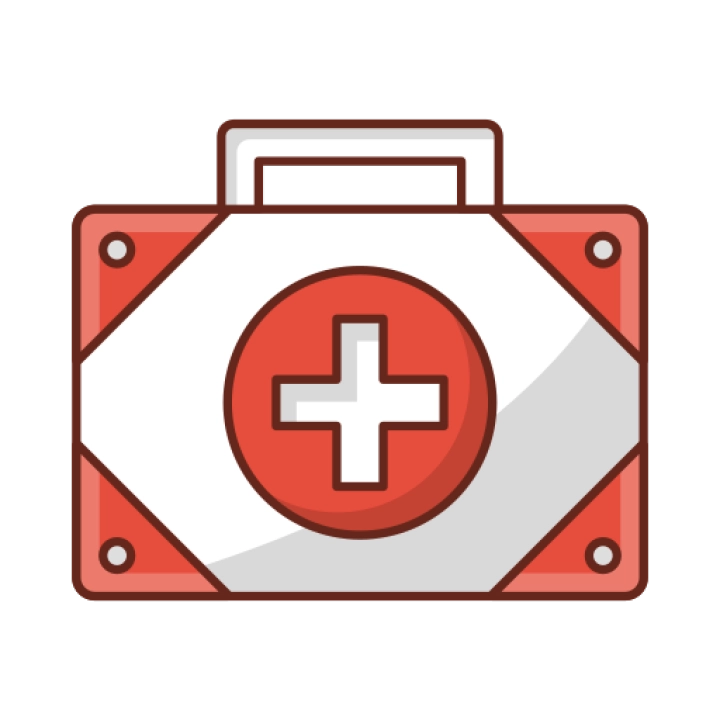College: Health Sciences
This specialization provides a comprehensive understanding of emergency response principles and first aid practices. Students explore key areas such as Emergency Medical Services (EMS), disaster management, trauma care, and life-saving techniques. The program emphasizes practical skills, quick decision-making, and the application of medical knowledge to provide immediate care in emergencies. Graduates are prepared to work as Emergency Medical Technicians (EMTs), first responders, disaster relief workers, and healthcare specialists.
Learning Objectives:
- Understand the fundamentals of emergency response and first aid.
- Develop skills in assessing and managing medical emergencies.
- Learn techniques for providing life-saving interventions and trauma care.
- Explore the role of disaster management and emergency preparedness.
- Understand patient stabilization and transportation principles.
- Analyze challenges and opportunities in emergency and first aid fields.
- Develop critical thinking and problem-solving skills in emergencies.
Course Outline:
- Introduction to Emergency and First Aid
- Overview of the field, its history, and significance in healthcare.
- Basic Life Support (BLS) and Cardiopulmonary Resuscitation (CPR)
- Study of CPR and the use of automated external defibrillator (AED).
- Techniques for providing basic life support in cardiac emergencies.
- Trauma Care and Injury Management
- Principles of evaluating and managing traumatic injuries.
- Bleeding control techniques, fracture stabilization, and shock prevention.
- Medical Emergencies
- Basics of recognizing and responding to medical emergencies like heart attacks, strokes, and seizures.
- Techniques for providing immediate care and patient stabilization.
- Disaster Management and Emergency Preparedness
- Study of disaster response planning, resource allocation, and coordination.
- Techniques for managing large-scale emergencies and natural disasters.
- Patient Assessment and Triage
- Principles of patient evaluation, history taking, and triage in emergencies.
- Techniques for prioritizing care based on injury or illness severity.
- Emergency Medical Services
- Exploring EMS systems, protocols, and roles of EMTs.
- Techniques for pre-hospital care and safe patient transportation.
- Pediatric and Geriatric Emergencies
- Studying emergency care specific to children and elderly patients.
- Techniques for addressing medical needs and challenges unique to each age group.
- Emergent Trends in Emergency and First Aid
- Analysis of innovations like telemedicine, Advanced Life Support (ALS), and mobile health technologies.
- Techniques for adapting to new trends and technologies in emergency care.
- Capstone Project in Emergency and First Aid
- Real-world project applying skills in emergency response, disaster management, or trauma care.
- Techniques for providing a comprehensive emergency care solution.
Assessment Methods:
- Practical exams in CPR, trauma care, and patient assessment.
- Written assignments on emergency protocols, disaster management, and medical emergencies.
- Group projects in disaster response planning and emergency simulations.
- Participation in internships or fieldwork with EMS agencies, hospitals, or disaster relief organizations.
Recommended Textbooks:
- "First Aid, CPR, and AED Essentials" by Alton L. Thygerson and Steven M. Thygerson.
- "Emergency Care and Transportation of the Sick and Injured" by the American Academy of Orthopaedic Surgeons (AAOS).
- "Disaster Medicine" by David E. Hogan and Jonathan L. Burstein.
- "Advanced Cardiovascular Life Support Provider Manual" by the American Heart Association (AHA).
Prerequisites:
Basic knowledge of biology, anatomy, or healthcare is recommended. Suitable for students in health sciences, emergency medicine, and related fields.
Duration:
Typically 2 to 4 years, depending on the program, including coursework, practical training, and internships.
Certification:
Graduates can earn a degree in emergency and first aid or a related field and pursue additional certifications (e.g., EMT certification, CPR/AED certification).
Target Audience:
Aspiring emergency medical technicians, first responders, disaster relief workers, and healthcare professionals seeking excellence in emergency response and first aid. This specialization equips students with the practical, technical, and decision-making skills necessary to excel in emergency and first aid, providing life-saving care and improving outcomes in critical situations.



